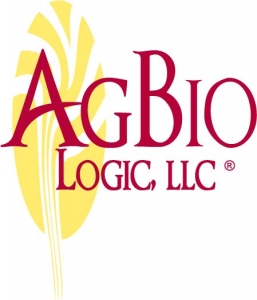Biological-biostimulants 101 and Their Roles in Crop Production
Jerry O’Dell Agriculture Economics Bachelor of Science Clemson University
The biological-biostimulant product industry is becoming one of the fastest growing segments in crop input sales in the U.S. and possibly globally. Major agricultural suppliers have mounted promotional campaigns causing greater awareness of their benefits and more scientists are showing interest in discovering what place they may have in agronomic practices.
Biological is a broad term. When used in association with agricultural production, it is generally referencing three areas:
- Biostimulants
- Bio-fertilizers – microbes (seed inoculants)
- Biological control – microbes, plant extracts
Agricultural biostimulants as defined by the European Biostimulant Industry Council is as follows: “Plant biostimulants contain substance(s) and/or micro-organisms whose function when applied to plants or the rhizosphere is to stimulant natural processes to enhance/benefit nutrient uptake, nutrient efficiency, tolerance to abiotic stress and crop quality. Biostimulants have no direct action against pest, and therefore do not fall within the regulatory framework of pesticides”.
Common forms of biostimulants are:
- Humic acid derivatives comprised of humic, fulvic and hymatheomelaic acids commonly extracted from Leonardite ore
- Seaweed, specifically Ascophyllum nodosum specie
- Enzymes (complex proteins).
A pioneer in the study of humic acids and seaweed in the United States was Dr. T.L. Senn, Head Professor Emeritus Department of Horticulture Clemson University. His work dates back to 1960. He published a book Seaweed and Plant Growth in 1987. He states, “Great advancements have been made in methods for the extraction, fractionation, homogenization and purification of humic substances. During this same time period, equal advancements have been made in biochemistry, biophysics, plant physiology, microbiology and other sciences related to plant growth and development. These scientific contributions have helped roll back the wall of ignorance surrounding humates and are largely responsible for the amazing increase in agricultural uses for humus products”.
Bob Trowbridge was Director of Cropchem Research in Decatur, IL. He held a patent on an extraction method of humic acids and was instrumental in the patenting of what still remains today a common method of extraction utilizing potassium hydroxide. He began incorporating humic acid derivatives in liquid solutions of N-P-K in 1976. He was a pioneer in foliar feeding plants nutrients and bringing to the mid-west and south liquid fertilizers. He reasons why humic acid products are gaining in popularity once one understands the following benefits attributed to humic fractions:
- Change physical properties of soil and affect its water holding capacity
- Affect the cation exchange capacity (CEC) and buffering properties of the soil and aids in governing nutrient availability
- Promote the conversion of a number of elements into forms available to plants
- Increase the permeability of plant membranes
- Improve the growth of various groups of beneficial microorganism
- Root systems exhibit greater development and cell division enlargement
- Enzyme (complex proteins capable of accelerating speed of chemical reactions) and hormone systems are intensified
One of the first major marketers of seaweed in the U.S.A. was Per Bye Ohrstrom with Maxicrop U.S.A. Inc. based in Arlington Heights, IL. Commercial seaweed extracts became available in 1950 and is used virtually worldwide today. Its use is not new. Ancient Greeks, Chinese and Vikings enhanced soil fertility by incorporating seaweed into the soil. Certain regions of the U.S. have recognized for many years its benefits.
It has taken several decades of research to establish the principals underlying the mode of action of liquid seaweed extracts and in truth there is still more work to be done to get the full picture.
Various researchers until recently attributed the benefits to the presence of plant growth hormones (PGHs) such as cytokinins, auxins, indoles and gibberelllins and have in some cases detected very small level of these compounds.
In more recent times, most researchers have moved on from the traditional plant growth hormones and now strongly favor oligosaccharides (small sugars molecules) as the compounds most likely to be responsible for the stimulation of growth and protection from stress and disease. Recent research has discovered that supplementing extracts of Aschophyllum nodosum seaweed allows the plant to produce hormones. Brown seaweeds contain around 50% carbohydrates on a dry matter basis. These long chain biopolymers break down to produce large amounts of short chain sugars, which have been shown to have the following two very important roles in plant growth and health:
- As biostimulants, which regulate plant growth and development at very low concentrations
- As elicitors, which activate the plant’s immune defense system creating a resistance to pathogen attack
Dr. Ronnie Heiniger a crop scientist at NC ST University started his work with Agro Logic in the study of biostimulants in 1997. He maintained that study through the 2008 crop production year. He has reported the following:
- Soybean yield increases of 12.2 bushels per acre
- Wheat yield increases of 24 bushels per acre
- Corn yield increases of 30 bushels per acre
- Corn root volume increases 2.5 times
- Corn stalk diameter increase of .25mm
Dr. Heiniger feels there is a place for biostimulant use in certain agronomic practices and notes an increase in discussion among agronomist in the U.S.
Precision farm practices and technologies are helping the agricultural industry introduce products. Farmers know more about their soils and have a more convenient way of measurement when testing products. Most biostimulant products are marketed as liquids or as a seed treatment. Foliar feeding fits well with biostimulant use.
Biological-biostimulant use at proper rates and applied at critical stages of plant growth and reproduction can play a key role in the overall health of a plant and its reproductive potential.
